SLV Transformer for halogen metal halide
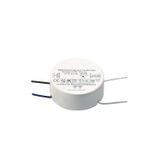
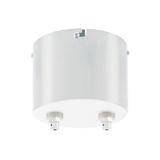
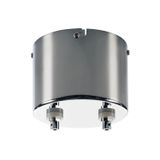
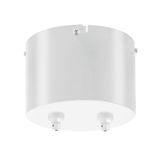

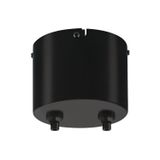

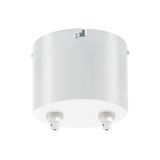
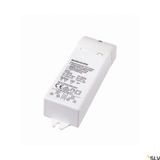
slv transformer for halogen lamps range and application
SLV builds purpose-designed step-down gear for 12 V halogen luminaires where stable voltage, cool operation, and clean dimming matter. Typical inputs are 220–240 V, 50/60 Hz; outputs are 11.5 V AC to keep filament color consistent over the load window. Models cover common loads (20–70 W, 35–105 W, 50–150 W), with soft-start to protect lamps and reduce inrush on multi-fitting circuits. Housing formats fit canopies, ceiling voids, and track roses, so retrofit crews can reuse existing cut-outs without rework.
slv transformer for metal halide lamps control gear context
Metal-halide sources are discharge lamps and require dedicated control gear: ballast + ignitor (and PF capacitor on magnetic sets) or a single electronic HID unit. In SLV projects you will see matched controlgear kits for 35/70/150 W classes with 3–5 kV ignition, warm-up sequencing, and end-of-life protection. Where specifications mention a “transformer,” it normally refers to the supply section within the HID controlgear. Verify lamp wattage, ignition type (superimposed vs series), and permissible cable capacitance between gear and lamp before freezing the bill of materials.
slv electronic transformers topology and protections
SLV’s electronic step-down designs use high-frequency conversion for compact size and low audible noise near seating areas. Expect efficiency in the mid-90 % range at nominal load, ripple well below filament-visible thresholds, and thermal cut-out with auto-reset. Short-circuit and overload responses are fold-back rather than hard trip, which helps during commissioning when lamps are swapped hot. Dimming compatibility is declared per part number—many units support trailing-edge (RC) and selected leading-edge (RL) dimmers; minimum stable level is typically 5–10 % depending on the dimmer curve. Power factor is ≥0.95 with THD ≤10–15 % on current production drivers.
slv low voltage transformers installation and wiring
Keep conductor losses under control. At 12 V, a 2 % drop is only 0.24 V, so cable cross-section and run length matter. For runs beyond ~3 m, upsize the copper or home-run each luminaire to the canopy location. Observe Ta and Tc: most interior units are IP20 with Ta −20…+50 °C and a marked Tc point (often 75–90 °C max). Maintain 10–15 mm air around convection-cooled housings; tight voids push Tc over spec and shorten life. On suspended lines, strain-relieve separately from the electrical conductors—suspension wires never carry the gear mass.
SLV technical specifications and standards
Controlgear conforms to the relevant parts of EN/IEC 61347 (safety), EN 55015/EN 61547 (EMC), and EN 61000-3-2/-3-3 (harmonics/flicker). Halogen units follow the lamp-controlgear sections for tungsten-halogen; HID kits follow the discharge-lamp clauses plus EN 60923/60922 for ignitors/ballasts on magnetic sets. Insulation classes match luminaire Class I or II requirements. For emergency supply compatibility, verify the output form: classic halogen gear outputs HF-AC and is not intended for battery DC unless explicitly stated.
SLV applications and compatibility
Hospitality pendants use compact electronic gear hidden in ceiling cups for quiet operation near diners. Retail accent lines prefer remote-mounted units to keep canopies small and serviceable. For museums and galleries, select units with low acoustic and electrical noise and specify a dimmer that holds stable at very low levels. HID up-lights in atria should use remote gear with published maximum cable capacitance; route away from VFD feeders to avoid EMC coupling.
SLV integration with luminaires and controlgear
SLV luminaires supplied as 12 V versions pair directly with the designated halogen unit; specify one transformer per fitting for uniform dimming or a correctly sized multi-output unit for groups with identical lamp loads. For metal-halide heads, match ballast type to lamp rating (e.g., 70 W ceramic) and ignitor topology per socket routing. Where a project migrates to LED but retains heritage housings, note that many LED retrofit modules need constant-current drivers, not the original halogen transformer; plan the swap at the same time as re-lamp to avoid callbacks.
SLV selection criteria for B2B clients
Start with lamp technology and wattage, then decide on gear location (in-canopy vs remote). Check minimum load for electronic halogen units—below the threshold they may not start or will flicker. Confirm dimmer family and curve early; many projects standardize on trailing-edge to lower acoustic noise and stress. For HID, verify mains tolerance (±10 %), ignition distance limits, and enclosure thermal class. Publish inrush values into the panel schedule so MCB selection doesn’t become a site surprise.
Advantages of working with Bankoflamps
You receive individual B2B pricing and a named account manager who aligns controlgear, canopies, and accessories with your single-lines and room data sheets. The portal shows live EU stock by warehouse; quotes typically return in about an hour with EAN/MPN, load windows, dimming notes, inrush, PF/THD, and mounting codes. Orders go in by manufacturer code, with downloadable, always up-to-date price lists and pricing validity windows. We track lead times and order status, provide purchase-history analytics, and offer post-payment up to 30 days for trusted clients. Shipments are consolidated by line and zone to cut freight and site sorting, and we support projects in France, the Baltics, Germany, Spain, Italy, Belgium, and the Netherlands.